One of the most intimidating parts of starting homeschool is the mysterious process of teaching a child to read. In our generation, literacy has been an affair handed over to professional teachers. It’s a process that most of us know little about, aside from our own childhood experience.
So when our five-year-old isn’t reading Fox in Socks the first day of homeschool, the implication is that something went terribly wrong—we didn’t choose the right method or curriculum. We are bad communicators. Homeschool is too hard. Our children are defiant and uninterested. If they don’t learn now, they might never!
While there are a lot of things we can do to create a culture of literacy in our homes, whether reading comes easily to our child is not something we can necessarily control, and neither can they! But there is a lot we can do to take some of the stress out of it.
So what can we do? That is what we’re going to talk about today in The Everything Reading Post. I like to take a more relaxed non-anxious approach to reading and that’s what I want to talk about today. The more options we have, the more we can enjoy this process of discovery along with our children!

The Difference Between Oral and Written Language
Infants learn to speak without any formal instruction; it’s a natural process that does not require a constructive approach. Babies and children learn language through the human interaction of nonverbal gestures, movements, and tonal cues.
Reading is a little bit different. It means knowing how to code and decode written phonetic symbols. It’s a process that for most children will require a constructive approach.
An alphabetic language like English requires comprehension of how written letters and letter patterns connect to words we already know. This is a multi-layer mental process! Reading comes very easily to me, so understanding this concept helped me to gain some perspective on why reading isn’t necessarily a natural process for everyone.
You can approach reading intensively and early with a focus on technical optimization if you want to, and some people recommend doing it that way. I don’t prefer to do that and I’ll expound on why below!
Some children do figure out how to decode words by themselves. (You can read about that in Peter Grey’s book How Children Acquire Academic Skills without Formal Instruction). However, most kids need instruction—and as you’ll see as you read on, some will need more than others depending on their processing style.
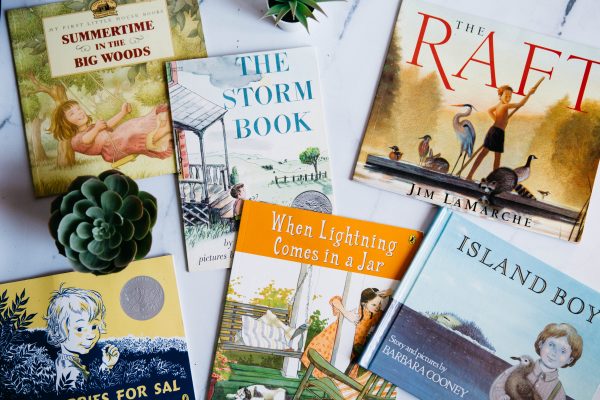
The Brain-Body Functions Needed For Reading
Learning to read requires brain and body working together. This means specific physical and neurological processes have to be fully developed first! Some research shows that children gain the necessary body-brain abilities to read at around the age of eight, which is why I do not prefer to start reading instruction with very young children.
Here are some of the reasons why I like to wait!
Vision: children of six or under are often not able to see well enough to read properly. Requiring a young child to focus on small objects at close range for long periods of time can cause undue strain and even nearsightedness. Some research points to eight as being the optimal age for a child to read printed symbols on a regular basis.
Visual Perception Process: Reading requires many parts of the brain working together instantly and seamlessly. To understand what is being read, a child has to be able to visualize both letter shapes and words. Then they have to retrieve what they already know and integrate it with new information that is coming in.
Hearing: Learning to read depends heavily on auditory skills. In order to read well a child has to be able to distinguish between letter sounds. They also have to be able to hear the entire word and perceive its meaning within a sentence. Have you ever heard a little child misquote song lyrics or common phrases? This is because auditory skills are still in development!
Intersensory Perception: Structured learning requires the integration of all the senses: touch, sight, taste, sound and smell. Early in life, babies learn a great deal through touch. (Everything to the mouth, right?) It isn’t until about the age of eight that a child is able to integrate vision and hearing with touch, an integration that requires countless brain operations. To do school-type skills well, a child needs to have full intersensory perception.
Reason: The ability to reason from cause to effect rises sharply between the ages of seven to eleven. Reaching “the age of reason” is foundational to the academic skills of reading, writing and math.
(This information was summarized from the book Better Late Than Early, by Dr. Raymond Moore. Hard copies are pricey and hard to get ahold of, but it’s available now on Kindle!)

So why is Kindergarten the Normal Reading Age?
The age range of seven to eleven is highlighted as the optimal developmental age for school-type skills. Though some children might be developmentally ready by kindergarten, there has to be a set starting age so that big groups of students can be easily measured and assessed.
The reason also has to do with written language being the dominant learning modality of the traditional classroom. Not reading by third grade is seen as a death sentence to a child’s education because this is the point at which kids go from “learning to read” to “reading to learn” in a conventional classroom setting. Students who are poor readers in regular school often go on a downward spiral of poor grades and low self-confidence.
At home we do not have this same dynamic. We can offer more broad multi-sensory learning through many avenues for as long as we need to. If your child doesn’t know how to read, they might have a difficult time engaging in a traditional classroom setting, but it doesn’t need to be a barrier at home.
Having this perspective can really help us release the societal expectations of reading by kindergarten. Educational methods like Montessori, Waldorf and Charlotte Mason encourage individual readiness and multi-sensory learning learning formats. This is one reason why they have been game-changers for so many homeschoolers!
So when should you teach your child to read? My answer is that I would read books to them every day as soon as much as their attention allows. (For toddlers it can be short, but it will grow!)
Then I would introduce phonics at age six with letter sounds. I use the word introduce because if you need to pause and try again later, you can. The point of the introduction not that you are bound to continue, but to experiment to see if your child responds.
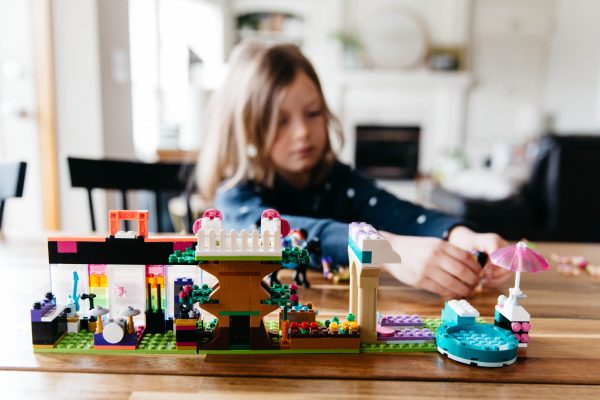
Processing Styles and Literacy
What about dyslexia? It is very hard to tell if young children have dyslexia or are simply not developmentally ready to read. Signs of dyslexia must persist over time. You can test your child if you are feeling anxious about this possibility. If you are thinking that your child might be dyslexic, here are some common signs.
The important thing to understand is that dyslexia is not a horrible handicap. It is actually a processing style with special giftings, which can sometimes interfere with a person’s perception of written language. I like how Ronald Davis describes dyslexia as “a gift that needs to be unlocked by turning off visual and perceptual disorientation.”
Many dyslexic people are big-picture, “global” processors. There is no cure for dyslexia but there there are non traditional methods that dyslexic people can use to learn to read.
1.) The Davis Method: a meanings-based approach using hands-on and big-picture methods.
2.) Orton-Gillingham: a sequential and systematic multi-sensory approach to phonics. Click here to see a list of the top four Orton-Gillingham homeschooling curriculums.
My daughter is mildly dyslexic and when I realized this, I brought it to the attention of the experienced teacher who was our guide when we homeschooled through a charter school. He told me that there is no cure for dyslexia and that I could test her if I needed the peace of mind, but more than likely she would just need extra time with things like letter sounds and memorization. In the long-run, she would need to learn how to advocate for herself and cope with her own processing style.
Some parents might want to get an official diagnosis right away, while others may prefer to avoid a label. My approach was to hold off panicking and wait until she turned eight so that I could eliminate the question of developmental readiness and maintain the positive, non anxious relationship with reading. By the time she was seven she was reading without any frustration and went on to become and avid reader and writer in her later elementary years.
There are tests that can be done very early to help you determine whether your child has signs of dyslexia and many reading specialists advocate for these tests to be done early so that risks can be mitigated right away. This could be important in a classroom environment where the pace is set and a child with a reading difference will be left behind, confused and distressed. For or a self-paced homeschooling environment, it’s not as big of a factor.
As for teaching a dyslexic to read, there are methods and therapies that you can use to help dyslexic children learn to read! (A lot of homeschool parents have had success with All About Reading.)
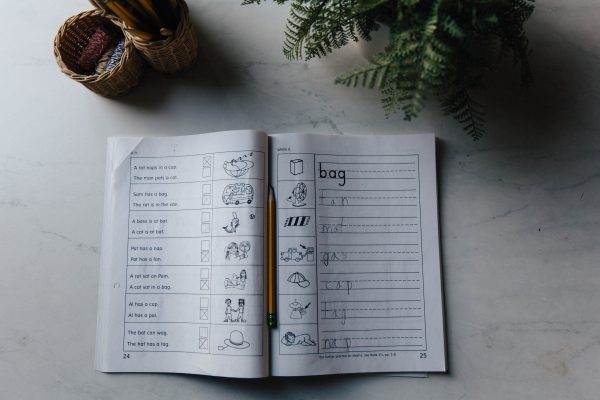
How Do I Teach A Child To Read?
The short answer is, you’ll follow a phonics curriculum! Phonics curriculums will involve worksheets, flashcards and games (and sometimes even puppets!) Professionals have written explicit, step-by-step phonics curriculums for homeschooling families that will guide you through exactly what to do. The biggest challenge is picking a program! If the curriculum you picked isn’t working, try another one. This is not failure–it’s tailoring your education to your child.
There is a long-standing debate about whether or not phonics should be taught from “whole to part” (analytical method) or “part to whole” (synthetic method.) Both sides swear their way is superior and claims that the other side is going to ruin the child, but of course both have their pros and cons.
A “whole to part” or “analytical” method is a more holistic method where a child might learn to read by context clues and recognizing whole words at a time. This is how many children teach themselves to read. When we teach children to recognize “sight words,” this is an analytical approach. The advantage to this way of learning is that it provides meaningful context before giving rules and mechanics, but there are some major downsides too.
A “part to whole” or “synthetic” approach goes straight into rules and mechanics first. Synthetic phonics breaks reading up into its smaller parts and teaches those parts one by one. Learning individual letter sounds and blending them together is synthetic phonics.
Recent research shows that a synthetic approach to phonics is the best way to teach reading for success in the long run, as it leads to much better orthographic mapping (a process of storing and retrieving words that is different than memorization!) With phonics it’s easier for a reader to connect something new with something they already know.
Most homeschool phonics curriculums are based on a synthetic approach phonics. It is the most common method used in homeschooling, and it works for most children. I prefer teaching phonics synthetically, because when a child knows sounds, they can read many more words than what can be memorized! They will naturally memorize whole words as they go.
The podcast docuseries Sold a Story is an absolutely fascinating account of how public schools adopted a whole-word approach to reading and how it affected kids negatively. In short, a base in phonics is the way to go–even if your child has started reading whole words I would take them through the first three books of Explode the Code. They’re simple and easy to execute (links to everything below!)
This doesn’t mean there won’t be kids that will figure out how to read with an analytical, holistic approach! Some kids figure out how to read by context and then put together the phonics puzzle from there and turn out to be fine readers.
Either way, I go the route of synthetic phonics but with a heavy dose of readiness and a print-rich environment! It’s simple to do and most children thrive with this type of teaching.
Learning phonics is a stage of language arts and it doesn’t go on forever! Most children do not need more instruction once they got the basics. They will begin to code and decode more complex words as they read more. Many common words are simply memorized from repeated exposure. After reading and writing has been mastered, the next step for most families is to begin spelling practice.
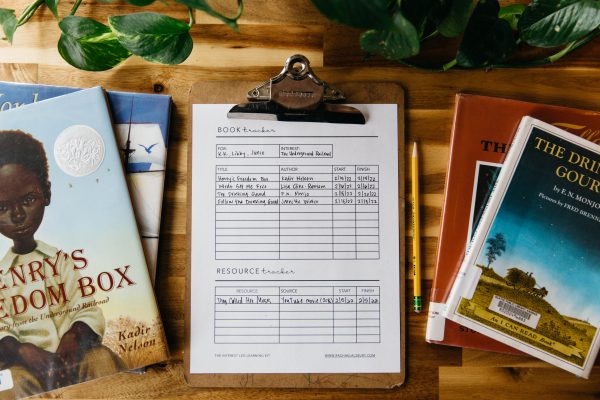
What We Use
So far the only curriculum we have used for phonics has been the Explode the Code Workbooks. I started all of mine at the very beginning (Books A, B & C) and had them do a page or two a day until we reached about Book 3. After that, they were bored. They had enough context and background knowledge to start reading on their own. We also practiced letter sounds with some simple flash cards. (Synthetic phonics!)
My kids loved Bob Books for early reading practice. For progressing into higher reading, audio books provided my girls with great scaffolding. They memorized the Arnold Lobel audio collection and the Frog and Toad audio collection by ear before picking up the books themselves.
The first chapter books they read were The Ramona Series, which came about after they had listened to the Beverly Cleary Audio Series several times over. You can find my favorite audio book series for young children here.
A Long Perspective
As you teach your child to read, what are you learning about who they are? Are they a global or geometric processor? Do they want to read Calvin and Hobbs or Little House on the Prairie? Do they like the comfort of your presence and support, or do they want to fly on their own?
There is no right or perfect way to learn to read. I hope this helped to turn on the lights and set your heart at ease on the subject of reading! I’ve compiled all of the links mentioned in this post into a handy list below.
If you enjoyed this post, you may also like the chronicles of our yearly homeschool recaps here. You can also read about our guided unschooling approach here.
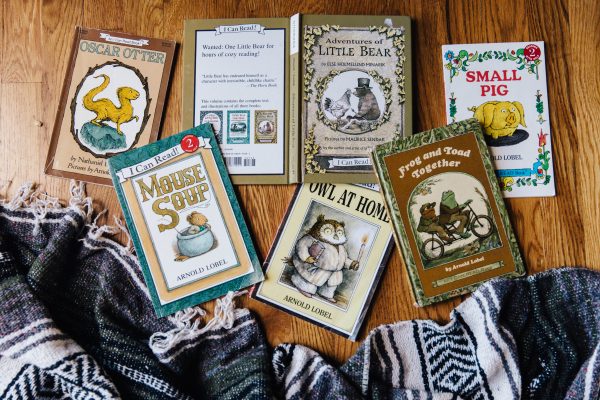
Books
How Children Acquire Academics Skills with out Formal Instruction
The Ultimate Homeschool Mama Book List
Websites & Links
Synthetic vs. Analytic Phonics
Curriculum & Materials
Explode the Code: Get Ready for the Code
Children’s Audio Book Collections
4 Popular Curriculums for Dyslexic Readers
10 Popular Homeschool Phonics Curriculums
For candid thoughts on faith, motherhood and homeschooling, subscribe to my Substack newsletter!